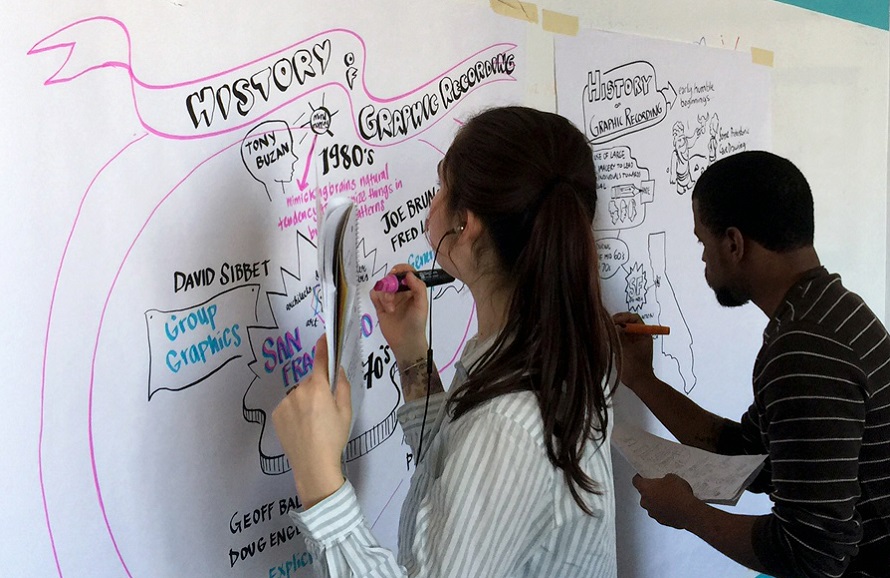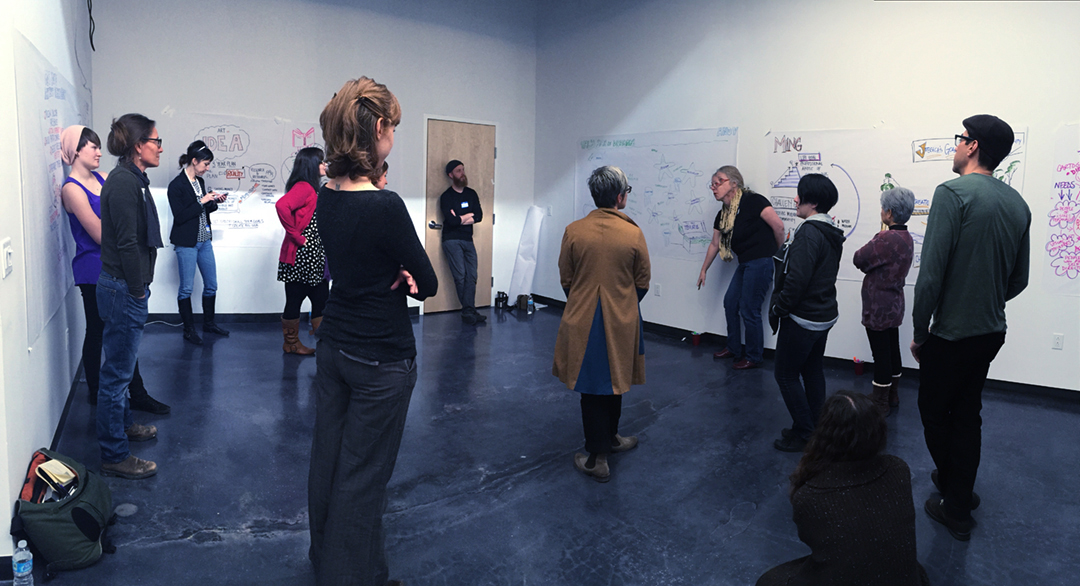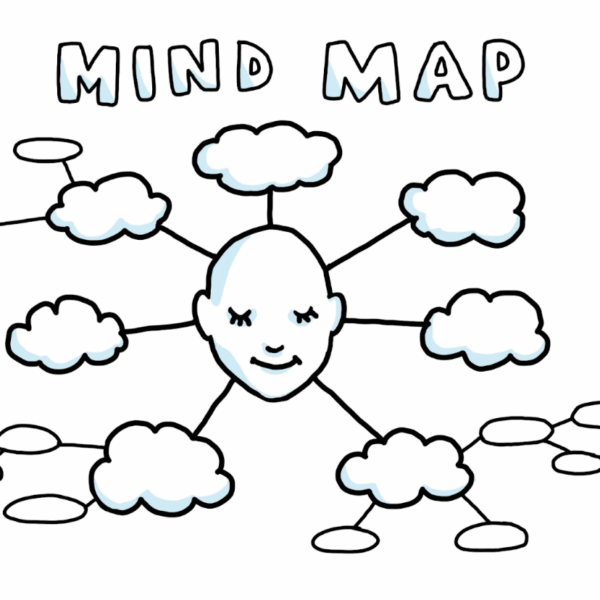The Way of the Graphic Recorder

As graphic recorders, ImageThinkers are a unique species of visual artists, bathing in the limelight a bit as we support everything from brainstorm sessions to keynotes. When the sessions wrap, it’s not uncommon for attendees to ask how we do what we do—listening, synthesizing, and drawing to create infographic murals in real time. Is it a born ability, or a learned skill?
The quick answer is: we have a lot of practice and supportive colleagues to help us learn the trade. While most of our graphic recorders have a background in fine art or illustration, the bigger thing we look for is curiosity, diligence, and a willingness to learn. That’s because it takes real effort and at least three months to complete the graphic recorder training we’ve developed in our nine years in the field.
Here are a few things things we teach new graphic recorders in our custom training curriculum.

Learning To Really Listen
While the output is a drawing, the core skillset of graphic recording is empathetic, active listening. At ImageThink, we train our graphic recorders to pick out key information through context clues like repetition, intonation, and inflection. We challenge each other to scribe concisely without missing crucial information. That’s why we are able to synthesize information and conversation related to a wide range of industries, even if the content is at first totally foreign to us.
Reading Up At ImageThink University
Before we unleash them onto the Neuland markers, we ground our new team members in the methodology behind graphic recording. Giving them time to read up on the history of the field and the applications of visual thinking lends a conceptual framework to the rest of the training. Just as importantly, it helps them describe their new job to curious friends and family! The Back of the Napkin, Visual Meetings, and our very own Draw Your Big Idea are just a few of the titles they can pull from the ImageThink bookshelf. Check out our Business Leader’s Visual Library for more great reads.
Drawing Out Loud: Sketchnotes At Large Scale
Even with a background in illustration, drawing in real-time as a means of immediate communication can be tricky at first, to say the least. That’s because it requires creating imagery as quickly and efficiently as possible, all while keeping in mind how it integrates with text and communicates the content at hand.
Exercises like graphics “jams”, large scale drawing, and quick sketching all help us develop a visual vocabulary to keep in our back pockets—so that we can keep our focus on your conversation even as we fill a board with fun imagery.
Practice, Practice, Practice
Once core skills like listening and large-scale drawing are formed, it’s time to put them to use. ImageThink graphic recorders practice scribing in real time and at true scale by listening to a range of podcasts, interviews, and recorded conversations. We always build in time for feedback from the rest of the team about content capture, composition, iconography, and use of space. It takes time to work learnings into muscle memory to the extent necessary to execute well onsite. We give our new team members as much time to practice and digest new learnings and feedback as possible.
Finding Flexibility: Graphic Recording, By Any Means Necessary
A key tenet of graphic recording is nimble thinking and quick solutioning. No matter how prepared you are, things can happen that no one planned for—and it’s our job to create beautiful, informative graphic recordings anyway. From last minute changes to agendas, to missing keynote speakers, to venues too small to fit an easel, we prepare our new recruits to think on their feet with drills that simulate onsite challenges.
Learning From The Best: Onsite Shadowing
The best training, though, comes from simply being present onsite with more experienced graphic recorders. Team members in training are invited to shadow the other graphic recorders to see how they interact with clients, deal with onsite challenges, field questions from the audience, and do graphic record even the most complex session. It’s an opportunity for new graphic recorders to ease into what can sometimes seem completely foreign when they first start.
Continued Support and Continued Training
At some time, there’s nothing left to do but let our new graphic recorders fly from the nest to their first solo job. But they’re never truly on their own: a team of account managers and graphic recorders is there to support them and make sure their job goes brilliantly.
Even once the official ImageThink training curriculum is completed, however, the learning never stops. Our graphic recorders meet weekly for a dedicated hour of learning, feedback, and discussion to keep our skills sharp and ever increasing.
See Us In Action At Your Next Meeting
Ready to use graphic recording to create engagement and impact at your next meeting or event? Get in touch with our account managers to learn how we can help.

